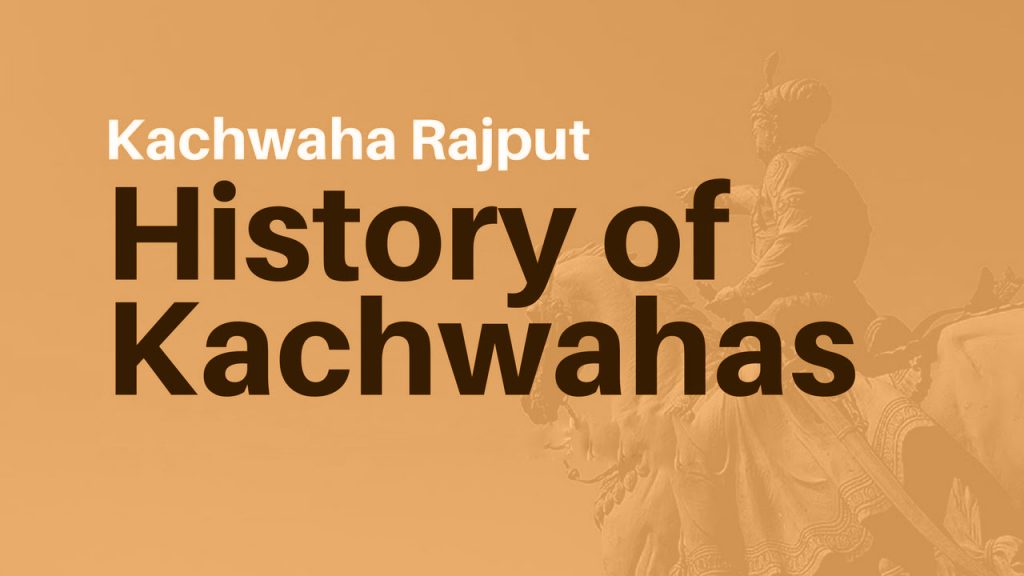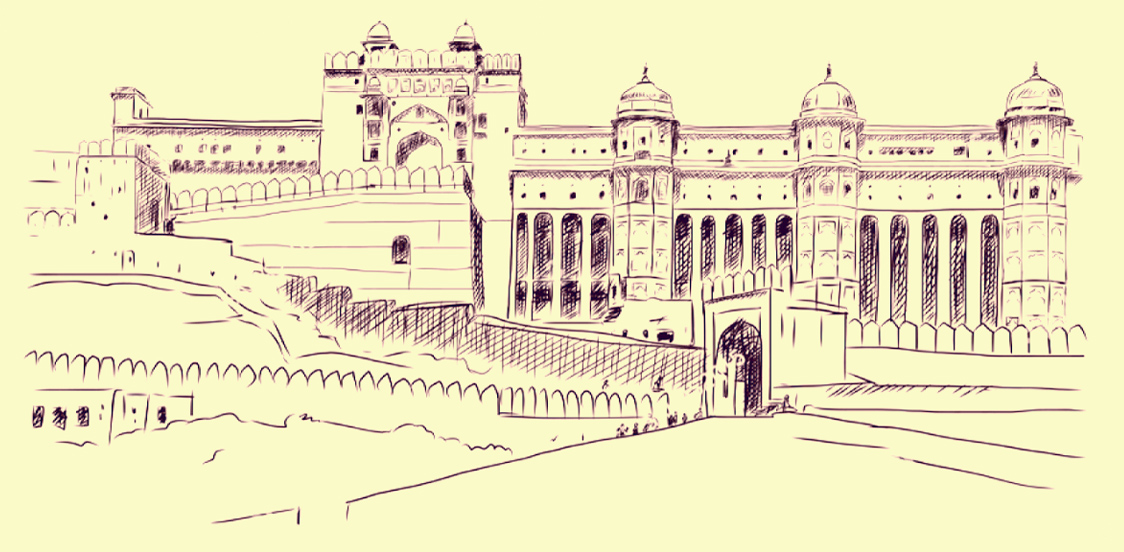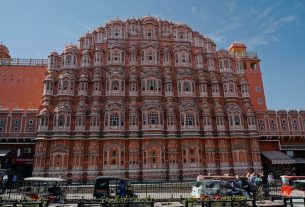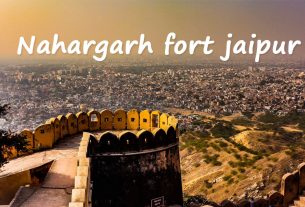Jaipur, also referred to as Pink City echoes history in every sense. The capital city of the state of Rajasthan, Jaipur is one of the most famous and important tourist destinations of India. It is the land swathed in beauty and its numerous instances is the proof. Despite a lot of modernization, the city hasn’t left its roots. Each of the structures has been successful in maintaining its vitality and uniqueness till date. It has the honor of being the first planned city housing remnants of the victorious legacy in the form of architectural marvels. Learning about the history of Jaipur is a mesmerizing experience in itself.
The History Of Kachwaha Dynasty

The history of Jaipur dates back to the 12th century, when the Kachwaha Rajputs first arrived in the vicinity of Jaipur. Known to be the descendants of Kusha, one of the twin sons of Lord Rama, the Kachwaha Rajputs used their impressive soldiering skills and their ability to enter into profitable alliances to gain immense wealth. However, their real power came from their strong relationships with the Mughal Emperors. The Kachwaha Rajputs on their first arrival into the region, established themselves in the fort palace of Amber, situated at the foothills of the Aravalli Hills. Maharaja Jai Singh II was a great Kachwaha Rajput king, who ruled the region between 1699 and 1744.
Foundation of Jaipur
Known for its rich ancient culture, Jaipur was founded by the Kachwaha Rajput ruler, Maharaja Jai Singh II in 1727. The Maharaja wanted to shift the capital of his kingdom from the current city of Amber, as the increasing population and the growing scarcity of water were troubling his subjects. This was how he decided to build the city of Jaipur, which was located at a distance of only 11 kms from Amber. Also a famed mathematician and astronomer, Maharaja Jai Singh showed great interest in the design and architecture of the city and even sought the advice of various architects and architecture books before planning its layout. He received much help from the Bengali scholar Vidyadhar Bhattacharya, in designing the architecture of the city.
The architecture of the city was not only the best in entire India, but was in fact quite advanced of its time. The Maharaja himself being a great astronomer and town planner, planned the city according to the principles of ancient Indian architectural science of Shilpa Shastra. He received much help from the Bengali scholar Vidyadhar Bhattacharya, in designing the architecture of the city. Jaipur city is named after its founder Maharaja Jai Singh II. The name of Jaipur in Hindi symbolizes as a city of victory and soon it became famous by this name.
Understanding the Architecture of Jaipur
The construction of the city started in 1727. It took 4 years to complete the construction of the major forts, places, stone paved roads, and central squares. Maharaja Jai Singh was extremely keen on ensuring maximum security for the city and that is why he utilized all his scientific and cultural skills to design it in a well-protected manner. This was done by constructing huge fortified walls that enclose the city. Every wall reflects the sumptuousness of Jaipur when it comes to architecture. The walls have seven strong gates around the city. Each construction was done keeping in mind the techniques of Vastu Shastra. Due to this, the city Jaipur is surrounded by the most spectacular sites and numerous remarkable constructions.
The formation of this city was built on the basis of a grid system. There are nine rectangular city sectors, in two of the blocks are constructed stately buildings and palaces and the remaining seven blocks were intended for use by the public. It is believed that these nine blocks signified the nine planets of the Indian zodiac. The influence of the zodiac was also apparent in the construction of commercial shops. These shops were generally designed in the multiples of nine, with each such block being separated from the other by a cross street representing a planet.
Relation With Mughals
Maharaja Jai Singh was known to be a man of great wit, which many believe was the reason behind the extremely good favour that Jaipur enjoyed with the Mughals. As the history of Jaipur says, when the Maharaja was only 15 years old, he was summoned to the court of Mughal Emperor Aurangzeb. On meeting the Emperor for the first time, Maharaja Jai Singh clasped the hand of Aurangzeb, which later had extended as a mark of greeting. The Maharaja explained his action by saying that the extended hand of the Emperor had meant that he was offering everlasting protection to the Maharaja and his kingdom. This impressed Aurangzeb so much that he bestowed the title of “Sawai” on Jai Singh. The title was continued to be used by the descendants of Maharaja Jai Singh II.
At a later stage, the relationship between the Maharaja and the Mughal Empire became strained, when the former supported Aurangzeb’s Son Azam Shah as the successor of the empire against his brother Bahadur Shah. However, Azam Shah lost the battle and when Bahadur Shah became the Emperor, he tried to remove Jai Singh from the throne of Jaipur. However, Jaipur reinstated himself by forming a powerful alliance with other Rajput kings. Later, when peace was restored, the relations between the Mughals and Jai Singh became cordial once more. Even after the death of Maharaja Jai Singh, while his descendants fought to get a piece of the kingdom, Jaipur continued to enjoy good relations with the Mughals.
Struggles of the city
The city had to pay heavily in the past to inherit what it has today. Jaipur continued to be a princely state till 1948. In 1773, after Jai Singh died, a battle for succession followed. The Marathas and Jats who were ruling various parts of the country decided to try their luck in Jaipur. Though it had lost against them in 1790, it had enough wealth to carry its patronage. After Sawai Jai Singh, ruled Ishwari Singh, followed by different rulers of Kachwaha dynasty. On 7 April 1949, Jaipur became a part of Indian Union. Currently, Sawai Padmanabh Singh resides in the City Palace of Jaipur with his Royal Family.
The Name Of Pink City
There are endless rows of pink-hued buildings and monuments all over the streets of Jaipur. The label of “Pink City” makes Jaipur famous. This name Pink City has a special significance in the history of Jaipur. Even after British annexed India, Jaipur continued to maintain healthier relationships with them. In 1818, Maharaja Jagat Singh Of Jaipur along with several other princely states of north-west India signed the treaty. This gave them full control over their own territories although the overall governance was to be supervised by the British.
Later, in 1853, when the Prince of Wales visited the beautiful city, it got a new identity, a new name that is used even today. To welcome the prince, the then Maharaja of Jaipur, Maharaja Ram Singh got the entire city drenched in pink color. This is why it came to be known by The Pink City. The color was chosen as it was considered to be a symbol of hospitality within the local culture. The result was so impressive that the tradition has been carried on across generations. Even today, you will find the seven historical gates of Jaipur and nine squares turned into Bazaars possessing the colour of hospitality.
The Prosperous 19’s
Although Jaipur was always a major city, it became extremely prosperous during the 19th century. After his ascent to the throne of Jaipur in 1922, Maharaja Man Singh II encouraged the construction of various civic buildings. These included hospitals, schools, and the secretariat. Other major industries that helped the city to prosper included metal and marble. The rich cultural and architectural beauty attracted countless visitors to the city, making it a major tourism hub. The place was famous for retaining an old-world charm amidst the modern facilities and structures that were springing up in various parts of Jaipur. This marked Jaipur’s rapid development towards a prosperous city.
Such is the historical essence of Jaipur that fascinates, intrigues and interests every traveler. Today, the enthralling city with its rich cultural heritage jostling with its modernity is one of the most popular tourist destinations in India. Scrutinize the history of Jaipur with the immense beauty through its formidable forts, exquisite shrines, magnificent palaces, and beautiful gardens.



